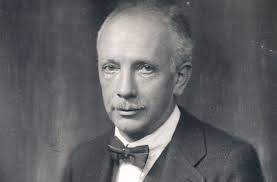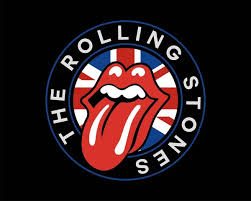Who says you can’t be a highbrow and love the Rolling Stones?

If you’re a lover of classical music, you’re probably already thinking of Richard Strauss and wondering about the inclusion of a fifth “last song.” If you’re not a lover of classical music, you’re wondering what the hell I’m talking about. Let me begin by addressing members of the second group.
Richard Strauss was a German composer who lived from 1864-1949. The jury remains out with respect to the man’s character. Though he never joined the Nazi Party – Strauss had a Jewish daughter-in-law and grandchildren – he accepted appointment to the directorship of the Nazi Reichsmusikkammer (Reich Chamber of Music) – a position he held from 1933-1935. Strauss eventually fell out of favor with the Nazis when he refused to condemn his own (Jewish) librettist, Stefan Zweig, an act that precipitated a move to Switzerland. (Israel lifted a ban on the performance of Strauss’s music in 1982, though controversy over the decision lingers.)
Character notwithstanding, Strauss was a gifted composer of late-Romantic music, best known for his tone poems and operas. Among the former are Don Juan, Death and Transfiguration, Till Eulenspiegel’s Merry Pranks, Also sprach Zarathustra, and Don Quixote. Strauss’ operas include Salome, Elektra, and Der Rosenkavalier. I have seen/heard live performances of most of these works – some, multiple times – and own CDs containing each of the aforementioned tone poems.
Truth be told, I’m not a huge fan of Strauss’ oeuvre. His music can entertain, amuse, lull, stir, soothe, and flirt, but rarely does it speak to me in a profoundly deep manner. Except, that is, for his valedictory composition.
The Four Last Songs is a collection of poems set to music over the period spanning 1946-48. The work was published posthumously and performed for the first time on May 22, 1950 by the Philharmonia Orchestra at Royal Festival Hall, London, with Wilhelm Furtwängler conducting and soprano Kirsten Flagstad performing the solo role. Both the work’s title, Vier letzte Lieder (Four Last Songs) and the order in which the songs were performed were the inventions of Strauss’ publisher, Ernst Roth.
You can learn about the background of the Four Last Songs by reading this set of program notes written for the Boston Symphony Orchestra by Duke University Professor Emeritus of Music, Bryan Gilliam. The article also furnishes lyrics to each of the four poems/songs in their original German, with accompanying English translations by Marc Mandel.
The four poems/songs, listed in the order of their performance (in most, but not all instances), are:
Frühling (Spring)
September (September)
Beim Schlafengehen (Upon Going to Sleep)
Im Abendrot (At Sunset)
The first three poems were composed by Herman Hesse…yes, that Herman Hesse…and the final poem (Im Abendrot) by Josef von Eichendorff.
The entire work is performed in the span of approximately 23 minutes.
If this is your first exposure to The Four Last Songs I strongly suggest listening to the entire work from beginning to end. Of course, there is the matter of which version of the work you should hear on your maiden voyage. To get a sense of the options, good-natured music critic Dave Hurwitz offers his appraisal of the top seven soloist performances of the work, in this video. (I’m partial to a recital by Lucia Popp that failed to make Mr. Hurwitz’ cut, though it is mentioned multiple times in the video’s accompanying comments.) Assuming you’re not going to make a purchase before listening to a recording available online, I’ve picked one out for you (see below).
If you fear you lack the sitzfleisch to endure 23 minutes of high-brow Teutonic tonality, listen to the last of The Four Last Songs, Im Abendrot, which runs for 8 minutes and 18 seconds. And if that is asking too much, in addition to being ashamed of yourself, fast forward to the 20:47 mark and give the remainder your full and undivided attention. What you will hear is some of the most beautiful music ever created.
Once you’ve heard the final two minutes you will want to listen to the entirety of the work so as to properly set up and pay off its denouement.
Find a comfortable space, pour yourself something sip-worthy and use the best available speakers, headphones, or (if need be,) ear pods. Here is Elisabeth Schwartzkopf’s performance of Richard Strauss’s Four Last Songs, accompanied by the Berlin Radio Symphony Orchestra, under the direction of George Szell.
Take a listen!
| Im Abendrot (At Sunset) Wir sind durch Not und Freude Gegangen Hand in Hand: Vom Wandern ruhen wir Nun überm stillen Land. Rings sich die Täler neigen, Es dunkelt schon die Luft, Zwei Lerchen nur noch steigen Nachträumend in den Duft. Tritt her und lass sie schwirren, Bald ist es Schlafenszeit, Dass wir uns nicht verirren In dieser Einsamkeit. O weiter, stiller Friede! So tief im Abendrot. Wie sind wir wandermüde— Ist dies etwa der Tod? —Josef von Eichendorff | Through pain and joy we’ve traveled hand in hand; let’s rest from wandering, now, above the quiet land. Around us the valleys are waning, already the sky is darkening, yet, still, two larks, dream-seeking, soar upward into the air. Step close and let them fly, it’s nearly time for sleep: lest we lose our way in this solitude. O spacious, silent peace, so deep in evening’s glow! How travel-weary we are— Could this perhaps be death? |
What can one say other than this is music of ineffable beauty? And that being so, I must apologize for diminishing it by describing that which I receive from, or project into Im Abendrot’s fading, but never-to-be-forgotten notes. The surrender of resistance to the inevitability of nothingness. A profound settling marking the capitulation of the body. An apprehension of death, then death itself as souls take flight in the muted flutter of flutes. And it’s over.
But what of the fifth last song?
In April, 1971 – nearly 3 ½ years after the puerile experimentation of Their Satanic Majesties Request – the Rolling Stones demonstrated the singular range, depth, and power of their music with the release of what I (and a great many Stones’ afficionados) regard as not only their finest album, but as one of the greatest of all classic rock albums.

Others will insist that the Stones’ 1972 double album, Exile on Main Street, is the superior of the two, but in this devotee’s opinion, Sticky Fingers wins out on the basis of two tie-breakers: Mick Taylor’s magnificent outro guitar solo on Sway, and the inclusion of a work that, to this day, remains unique within the rock genre. That work (and the album’s valedictory song) is Moonlight Mile.
If you’re a classical music ‘purist’ and you’ve read this far…yes, I’m going to compare a Rolling Stones’ song to Richard Strauss’ Four Last Songs, and no, I’m not mistaking Moonlight Mile for Beethoven’s Moonlight Sonata. The crux of the (intellectual) comparison is this: Just as the denouement of The Four Last Songs affords a poignant apprehension of the release of the soul at the moment of death, the closing minutes of Moonlight Mile cap the majestic expression of a journey ended (with the hint of something to follow). But it’s the similarity of the purely emotional experience that invites a listen. If immersion in the last 90 seconds of Moonlight Mile is to an afficionado of the Stones as immersion in the final two minutes of the Four Last Songs is to a devotee of Strauss, the two works may well contain cross-cutting elements (the explication of which I will leave to others) worthy of personal exploration.
A word of caution to readers with a different sort of apprehension when it comes to listening to anything associated with the Rolling Stones. You’re going to endure roughly four minutes of Mick Jagger singing. And while this happens to be among Mr. Jagger’s finest interpretations – a nakedly soulful lament offered with genuine passion and absolute commitment – he’s not to be confused with Elisabeth Schwarzkopf. I totally get that. But to invoke an expression of the day, he’s singing his truth. It’s a truth that encompasses far more than the loneliness of life on the road, speaking as it does to all who have ever felt impossibly distanced from that for which they yearn most.
Should you harbor doubts about giving the Stones a serious listen, I believe Moonlight Mile will reward you with a series of unexpected pleasures: the softness of its texture, its subtle Asian accents, the perfect fit of lush strings to Jagger’s voice, and more. Let it take you where it does.
Of course, if you’re a Rolling Stones fan like me, there’s no need for cautions or disclaimers. The song is an absolute masterpiece from beginning to end!
Take a listen!
Moonlight Mile (M. Jagger/K. Richards)
When the wind blows, and the rain feels cold With a head full of snow, with a head full of snow In the window, there's a face you know Don't the night pass slow? Don't the nights pass slow? The sound of strangers sending nothing to my mind Just another mad, mad day on the road I am just living to be lying by your side But I'm just about a moonlight mile on down the road Made a rag pile of my shiny clothes Going to warm my bones, going to warm my bones I've got silence on my radio Let the airwaves flow, let the airwaves flow For I am sleeping under strange, strange skies Just another mad, mad day on the road My dreams is fading down the railway line I'm just about a moonlight mile on down the road Yeah, yeah, yeah, yeah, yeah, yeah I'm hiding, sister, and I'm dreaming I'm riding down your moonlight mile I'm hiding, baby, but I'm dreaming I'm riding down your moonlight mile I'm riding down your moonlight mile Let it go now Come on up, baby Yeah, let it go now Yeah Flow now, baby Yeah, come on now, yeah Hey Yeah, I'm coming home 'Cause I'm just about a moonlight mile on down the road On down the road, down the road Yeah, yeah, baby
A closing word about the final notes of the ‘five last songs’. Just as Strauss’ work concludes with three gracefully ascending chords (at 22:15 of the above recording) that cloak the souls’ flight-taking in religious pathos, Moonlight Mile concludes with three propulsively ascending notes (at 5:46 of the studio recording) bespeaking an unknown continuity. In their distinctive ways, both Strauss and the Stones use the language of music to hint at something beyond finality.